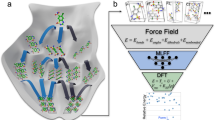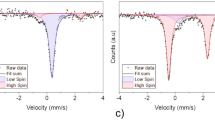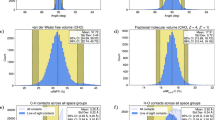Abstract
IN a very important paper (Phil. Mag., vol. 33, p. 521; 1917), Silberstein developed a theory of molecular refractivity based on the idea that the electric doublets induced by the field of the light wave in the atoms composing the molecule influence each other, the result of such atomic interaction largely depending on their relative distances and the geometric form of the molecule. One important consequence of Silberstein's theory, namely, that gaseous molecules should in general be optically anisotropic, is supported by observation, and has been worked out in detail by Ramanathan, Havelock, and others; it also forms the basis of W. L. Bragg's well-known and successful attempt to compute theoretically the birefringence of the solid carbonates and nitrates from their known crystal structure.
This is a preview of subscription content, access via your institution
Access options
Subscribe to this journal
Receive 51 print issues and online access
$199.00 per year
only $3.90 per issue
Buy this article
- Purchase on SpringerLink
- Instant access to full article PDF
Prices may be subject to local taxes which are calculated during checkout
Similar content being viewed by others
Author information
Authors and Affiliations
Rights and permissions
About this article
Cite this article
KRISHNAN, K., DASGUPTA, A. Pleochroism and Crystal Structure. Nature 126, 12 (1930). https://doi.org/10.1038/126012a0
Issue date:
DOI: https://doi.org/10.1038/126012a0
This article is cited by
-
Birefringence of crystals and its temperature-variation
Proceedings of the Indian Academy of Sciences - Section A (1947)
-
The absorption spectra of nitrates and nitrities in relation to their photo-dissociation
Proceedings of the Indian Academy of Sciences - Section A (1934)



